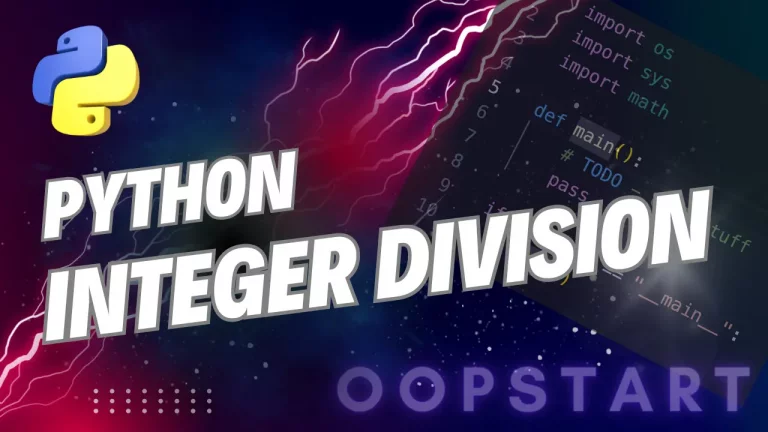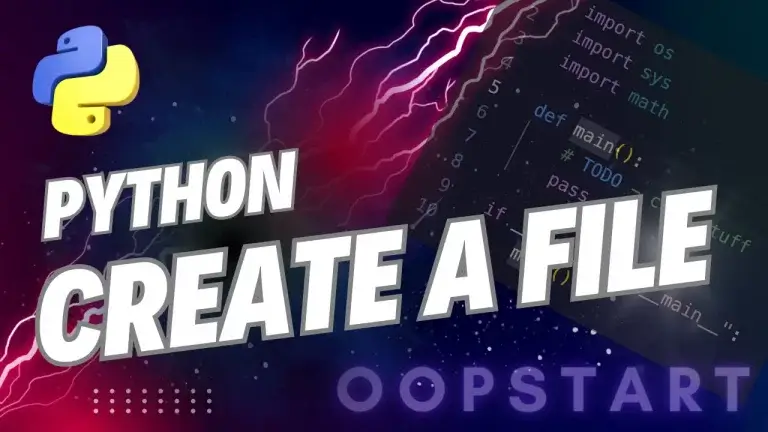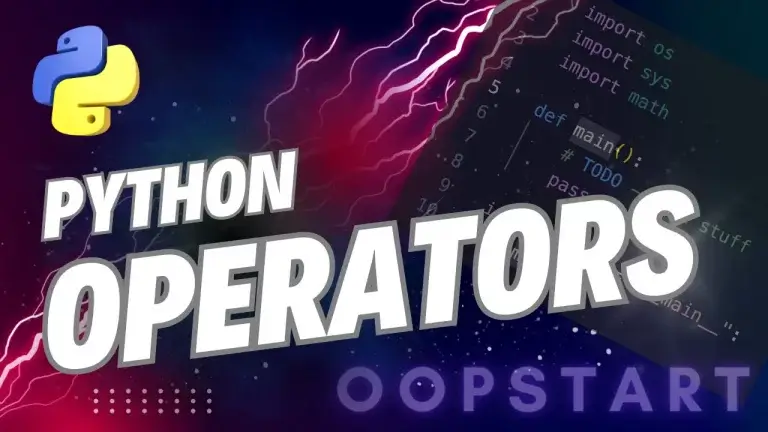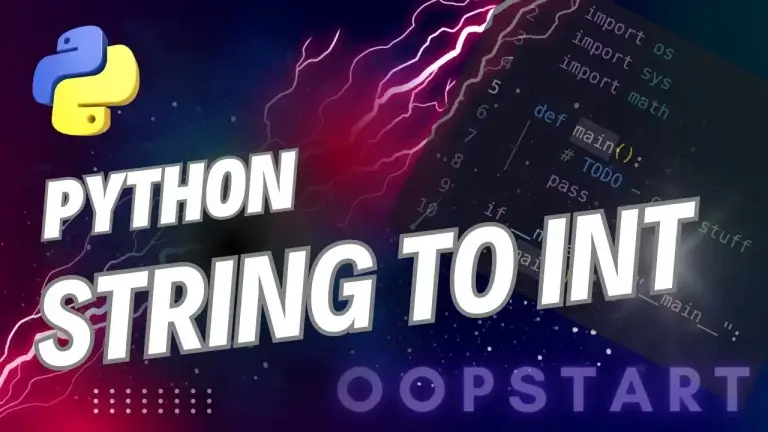How to Comment Out Multiple Lines in Python
Comments are useful for adding explanations to your code, disabling parts of it for testing, or temporarily hiding sections of the code that you don’t want to execute.
While Python doesn’t have a specific multi-line comment syntax like other programming languages, there are multiple ways to comment out multiple lines of code. We’ll explore various techniques, and by the end of this guide, you’ll know exactly how to comment out multiple lines in Python effectively.
Table of Contents
Why Comment Out Code?
- Readability: Comments help explain the logic behind the code, making it easier for others (and your future self) to understand.
- Debugging: Temporarily commenting out blocks of code can help identify and isolate bugs.
- Documentation: Well-commented code serves as an internal documentation for the project.
Methods to Comment Out Multiple Lines in Python
In Python, there are several techniques to comment out multiple lines. Below, we’ll go over each method in detail and explain when and why to use them.
1. Using Multiple Single-Line Comments
The most common way to comment out multiple lines in Python is by using multiple single-line comments. In Python, a single-line comment starts with the # symbol. To comment out multiple lines, simply add a # at the beginning of each line.
Syntax:
# This is a comment on line 1
# This is a comment on line 2
# This is a comment on line 3
Example:
# Initialize the list of numbers
# numbers = [1, 2, 3, 4, 5]
# Loop through the list and print each number
# for num in numbers:
# print(num)
This method is straightforward and clear. It is the most commonly used method when commenting out multiple lines.
2. Using Triple Quotes (Docstrings) as Multiline Comments
Another method for commenting out multiple lines is to use triple quotes (''' or """). Triple quotes are primarily used for docstrings, which are documentation strings that describe the purpose of functions, classes, or modules. However, they can also act as multiline comments since Python ignores them unless they are being used as a docstring.
Syntax:
"""
This is a multiline comment.
You can use triple quotes to comment out
multiple lines in Python.
"""
Example:
"""
numbers = [1, 2, 3, 4, 5]
for num in numbers:
print(num)
"""
Important Notes:
- Not Recommended for General Comments: While using triple quotes to comment out code works, it is technically not a comment. Triple quotes create strings, and if not used as docstrings, Python simply ignores them. It’s better to use
#for general commenting and reserve triple quotes for actual documentation. - Docstrings in Functions: Triple quotes are primarily used for writing docstrings inside functions and classes to describe their behavior.
Example of Docstring:
def add(a, b):
"""
This function adds two numbers.
Args:
a (int): First number.
b (int): Second number.
Returns:
int: Sum of a and b.
"""
return a + b
3. Commenting Out Multiple Lines in IDEs and Text Editors
Modern IDEs (Integrated Development Environments) and text editors provide keyboard shortcuts to quickly comment and uncomment multiple lines of code. This is particularly useful when working with large codebases. Instead of manually typing # before each line, you can use shortcuts to do it in bulk.
Common Keyboard Shortcuts for Commenting Out Multiple Lines:
- VS Code:
- Windows/Linux:
Ctrl + / - macOS:
Cmd + /
- Windows/Linux:
- PyCharm:
- Windows/Linux:
Ctrl + / - macOS:
Cmd + /
- Windows/Linux:
- Sublime Text:
- Windows/Linux:
Ctrl + / - macOS:
Cmd + /
- Windows/Linux:
- Atom:
- Windows/Linux:
Ctrl + / - macOS:
Cmd + /
- Windows/Linux:
As you can see, the shortcuts are pretty standard!
The shortcuts automatically comment or uncomment selected lines of code by adding or removing the # symbol at the start of each line.
Example:
Before using the shortcut:
numbers = [1, 2, 3, 4, 5]
for num in numbers:
print(num)
After using the shortcut:
# numbers = [1, 2, 3, 4, 5]
# for num in numbers:
# print(num)
This method is the fastest way to comment out multiple lines of code in most editors.
Best Practices for Commenting Out Multiple Lines in Python
When commenting out multiple lines in Python, it’s important to follow best practices to maintain readability and professionalism in your code.
1. Use Comments to Explain Why, Not What
Comments should explain the logic behind the code or why certain decisions were made. Avoid writing comments that merely restate what the code does.
Example (Avoid Redundant Comments):
# This is bad practice
# Initialize a list with numbers 1 through 5
numbers = [1, 2, 3, 4, 5]
Example (Good Practice):
# List of numbers to calculate their square
numbers = [1, 2, 3, 4, 5]
2. Use Block Comments for Larger Explanations
If you need to write multiple lines of comments to explain a more complex section of code, use block comments. Start each line with #, and make sure the comments are aligned and easy to read.
Example:
# Loop through the list of numbers.
# For each number, we check if it is even.
# If the number is even, we print it to the console.
for num in numbers:
if num % 2 == 0:
print(num)
3. Avoid Over-Commenting
Too many comments can clutter your code and make it harder to read. Only comment when it adds value to the code or helps explain the logic behind complex operations.
Common Pitfalls to Avoid
1. Using Triple Quotes for Regular Comments
While triple quotes can work as multiline comments, they should not be used as a substitute for #. Triple quotes are meant for docstrings, and using them as comments can lead to confusion, especially in large projects.
2. Not Removing Debug Comments
It’s common to comment out lines of code for debugging purposes. However, remember to remove these comments when they are no longer needed. Leaving unnecessary comments in your code can lead to confusion for others who work on the project.
Summary of Key Concepts
- To comment out multiple lines in Python, the most common method is to use multiple single-line comments, where each line starts with a
#. - Triple quotes (
'''or""") can also be used for commenting out blocks of code, but this method is primarily intended for docstrings. - Most modern IDEs and text editors provide shortcuts for quickly commenting out and uncommenting multiple lines.
- Always follow best practices by ensuring your comments add value and explain the logic behind the code.
Exercises
- Comment Out Code for Debugging: Write a Python script and then use single-line comments (
#) to temporarily comment out a block of code to debug a specific section. - Use Block Comments: Write a function that performs a complex operation and add detailed comments explaining each step of the process.
- Docstrings and Comments: Write a Python class with methods that include both docstrings and single-line comments. Practice using
#for general comments and triple quotes for documenting your methods.
Check out our FREE Learn Python Programming Masterclass to hone your skills or learn from scratch.
The course covers everything from first principles to Graphical User Interfaces and Machine Learning
You can check out the w3schools documentation on comments here.
FAQ
Q1: Can I use # for inline comments in Python?
A1: Yes, you can use # for inline comments in Python. These comments follow the code on the same line. However, be mindful that inline comments should be brief and only used when necessary to explain complex logic.
Example:
x = 10 # This is an inline comment explaining that x is initialized to 10
Q2: Can triple quotes (''' or """) cause performance issues if used for comments?
A2: Technically, using triple quotes to comment out code doesn’t affect performance because Python ignores these string literals when they are not used as docstrings. However, this practice can be misleading, as it creates strings that are not intended for documentation or use. It’s better to use # for comments to avoid confusion.
Q3: Can I comment out part of a line in Python?
A3: Yes, you can comment out part of a line by adding a # symbol after the code you want to keep. Anything following the # on that line will be ignored by Python.
Example:
x = 10 # Set x to 10 (this is a comment for clarification)
Q4: Is there a way to comment out multiple lines without manually adding # to each line?
A4: Yes, most modern IDEs and text editors provide keyboard shortcuts for commenting out multiple lines at once. For example:
- In VS Code, PyCharm, and Sublime Text, use
Ctrl + /on Windows/Linux orCmd + /on macOS to comment out selected lines. - These shortcuts will automatically add or remove the
#symbol from the beginning of each line.
Q5: Can I nest comments in Python?
A5: No, Python does not support nested comments. Once a line starts with a #, everything after it is treated as a comment. If you attempt to nest comments, the second comment symbol will be treated as part of the first comment.
Example:
# This is a comment # nested comment (this part is all treated as a single comment)
Q6: Is there a difference between using single quotes (''') and double quotes (""") for docstrings or multiline comments?
A6: There is no functional difference between using single quotes (''') or double quotes (""") for docstrings or multiline comments in Python. Both are valid as long as they are used consistently. However, double quotes (""") are more commonly used for docstrings, and it is recommended to follow this convention in most Python projects.
Q7: Can I comment out code within a string or docstring?
A7: No, comments cannot be placed inside strings or docstrings. Everything inside a string or docstring is treated as text, so adding # inside a string will not make it a comment. If you want to document something within a docstring, just write the explanation as plain text.
Example (in a docstring):
def example_function():
"""
This function does something.
It accepts no arguments.
"""
pass
Q8: What’s the difference between comments and docstrings?
A8:
- Comments: Begin with
#and are ignored by Python. They are used to explain specific parts of code or temporarily disable code. - Docstrings: Created using triple quotes (
'''or""") and are used to document functions, classes, or modules. Docstrings are not ignored and can be accessed at runtime using the__doc__attribute.
Example of a Docstring:
def greet():
"""This function prints a greeting message."""
print("Hello, World!")
Q9: Can I uncomment multiple lines of code at once?
A9: Yes, if you have commented out multiple lines of code using the # symbol, you can uncomment them all at once by using the same keyboard shortcuts that you used to comment them out. For example, in VS Code or PyCharm, select the commented lines and press Ctrl + / (Windows/Linux) or Cmd + / (macOS) to remove the comment symbols.
Q10: Is it necessary to comment out large blocks of code?
A10: It depends on the situation. Commenting out large blocks of code temporarily during debugging or testing is common. However, it’s good practice to remove unnecessary commented-out code once it’s no longer needed to avoid clutter and maintain clean code. Instead of leaving large sections of commented-out code, consider using version control (e.g., Git) to keep track of old code.








